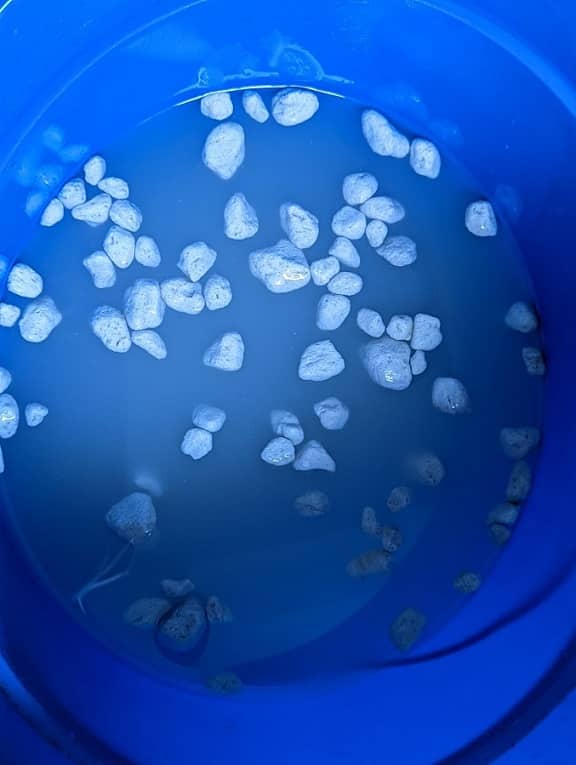When you add Seachem Matrix to the filter of your aquarium or directly in the fish tank, the water may become cloudy or milky.
You can check out this guide from Aquarium Blueprints to find what you can do, or if you need to do anything at all, to get rid of the cloudy water.
Quick Summary
One of the reasons Seachem Matrix is making you water cloudy is that the dust particles on the filter media were not rinse off of the stones before being added to your fish tank.
The good news is that the dust particles will be completely harmless to your fish and other aquatic pets.
Adding Matrix may also potentially cause a bacteria bloom, which will deplete the oxygen level in your tank water. The bloom may also indicate a spike in ammonia, nitrites and/or nitrates.
To clear out a milky or cloudy water that may have come from Seachem Matrix, you can do a partial water change, increase the water flow of your filter, increase the air low of your air stone and/or lower the temperature of your heater.
Why Seachem Matrix makes your aquarium water cloudy
One of the possible reasons that Matrix is making your tank water milky is that you did not thoroughly rinse the filter media before adding it to your filter or directly in your fish tank.
Seachem recommends that you clean the stones with plain water as much as possible before adding it to your aquarium. This is because the media is quite dusty due to the manufacturing process.

Another potential reason for Matrix causing cloudy water is bacteria bloom. For the uninformed, Seachem Matrix provides surface area to grow beneficial bacteria that consume ammonia, nitrites and nitrates. With enough nutrients, these bacteria may rapidly grow, resulting in your aquarium water looking milky.
Is cloudy water from Matrix harmful to your fish and other aquatic pets?
Cloudy water that resulted from the dust particles of Seachem Matrix will not harm the fish or any other inhabitants in your aquarium.
If the milky water came from a bacteria bloom, however, then you may get elevated ammonia, nitrites or nitrates. Furthermore, the oxygen level in your tank water may get depleted.
How to clear and make cloudy water safe for your fish and other aquatic pets
If you want to clear the cloudy water, or make it completely safe for your fish, then you can do the following:
1. You can do a partial water change of 20% at most. We don’t recommend doing more as big water changes can shock and stress out the inhabitants in your fish tank.
If the water still looks milky after a water change, then you can do another partial change 24 hours after the previous one.
2. You can also increase the water flow of your filter. The higher flow will clear the milky water faster and increase the oxygen level in your tank.
3. If you have an air stone with adjustable air flow, then we also recommend that you increase the flow to add more oxygen in the water of your aquarium.
4. You might also want to consider lowering the temperature of your fish tank.
This is because the beneficial bacteria will grow and reproduce faster at warmer temperatures. The warmer water will also have less oxygen when compared to colder water.
5. If you believe that the cloudy water came from a bacteria bloom, then we recommend testing your water to see if there are any spikes in ammonia, nitrites and nitrates.
For a healthy aquarium, you should have 0 ppm concentration of ammonia and 0 ppm concentration of nitrites.
For nitrates, you should aim for less than 40 ppm of nitrates for if you are keeping hard species of fish or other aquatic pets. For the more sensitive species, you should target less than 20 ppm of nitrates in your tank water.
If the test kit shows traces of ammonia and/or nitrites, then we recommend take a look at this guide to see how you can get both very toxic nitrogen compounds to 0 ppm.
If the kit shows high concentration of nitrates, then you should check out this tutorial to see how you can properly lower it to a safer level.
